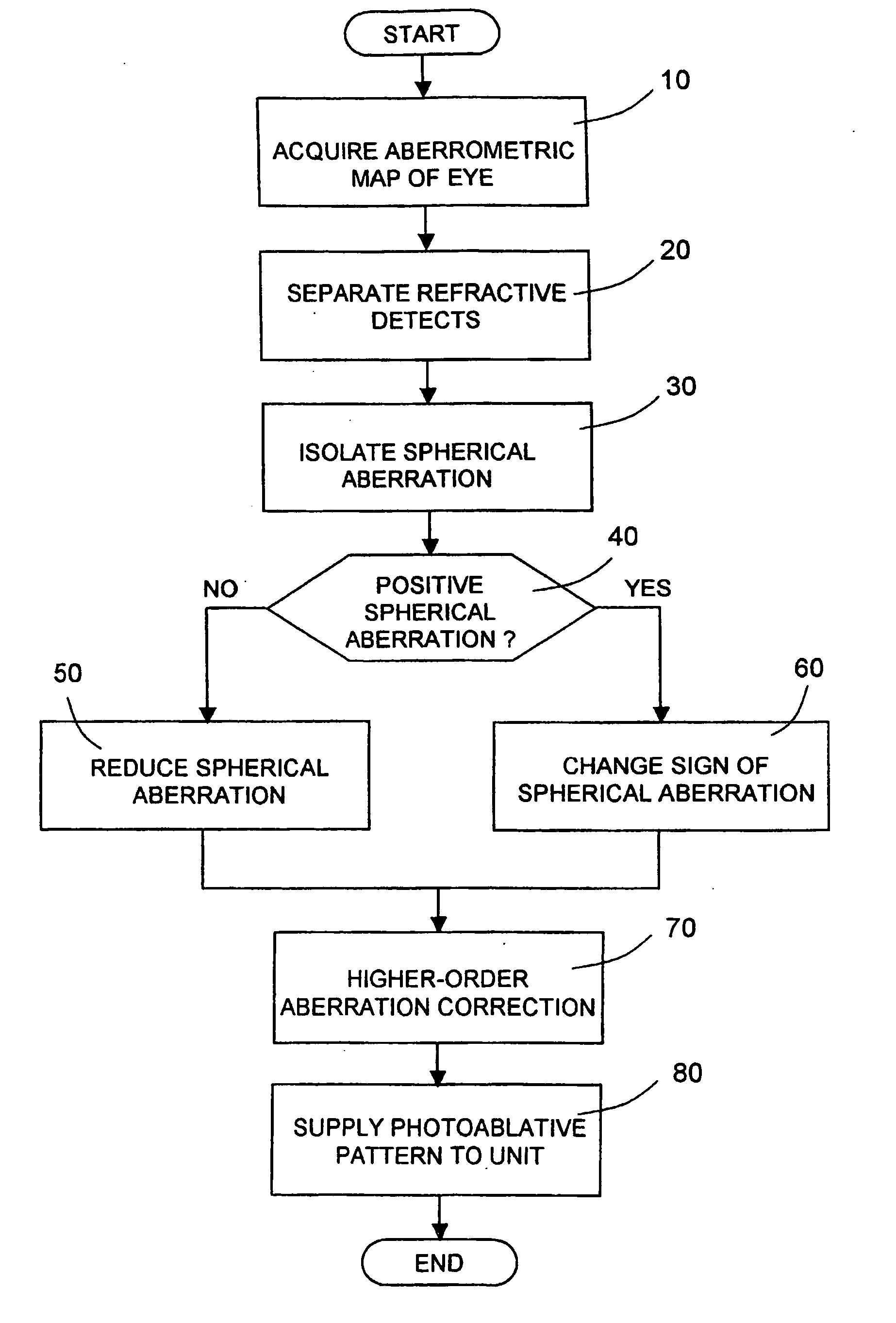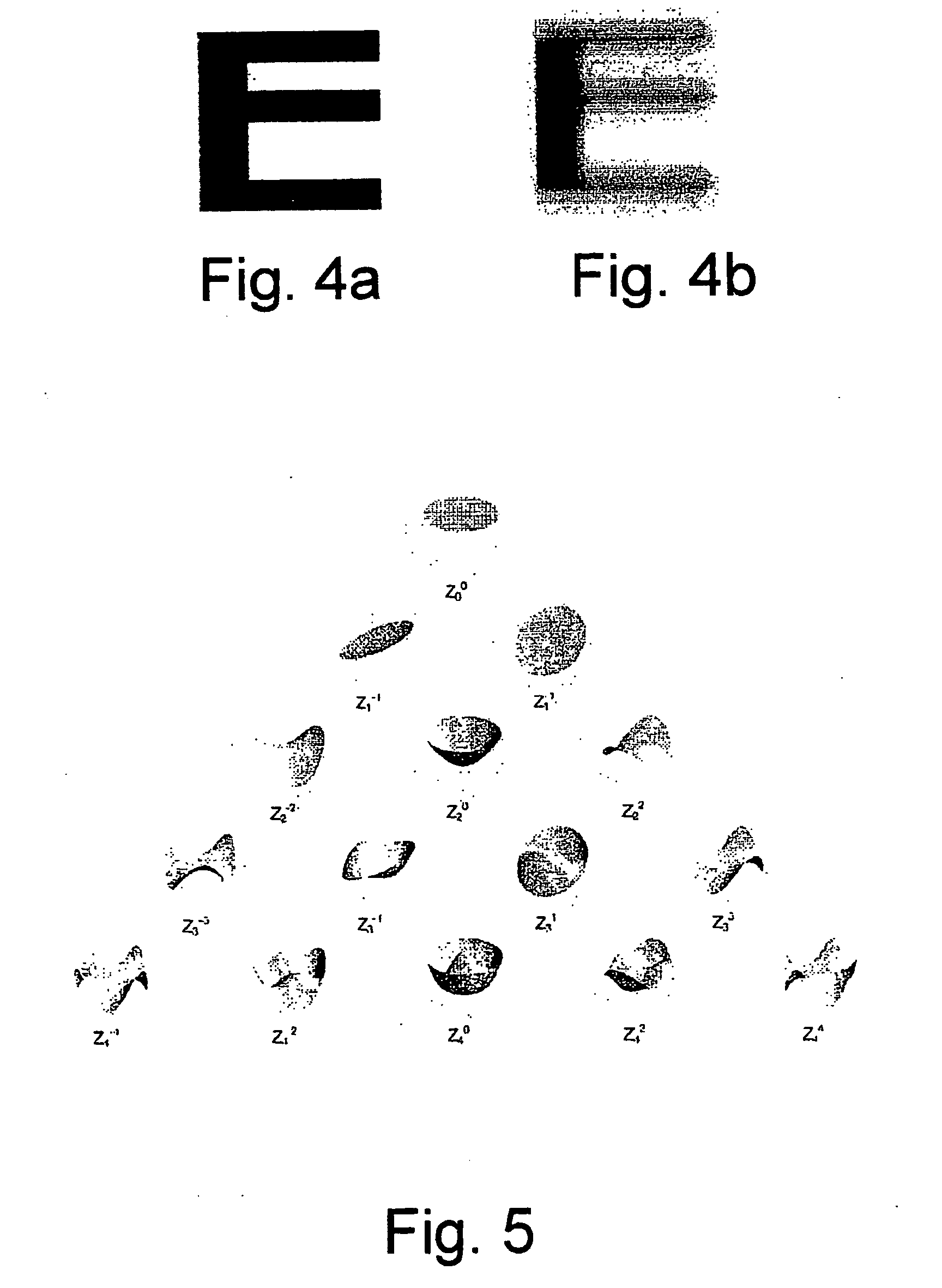Excimer laser unit and relative control method for performing cornea ablation to reduce presbyopia
a laser unit and laser technology, applied in laser surgery, medical science, surgery, etc., can solve the problems of increasing the heat effect and acoustic shock, the image is not focused correctly on the retina, and the optical components of the laser are more rapid to wear, so as to reduce the presbyopia
- Summary
- Abstract
- Description
- Claims
- Application Information
AI Technical Summary
Benefits of technology
Problems solved by technology
Method used
Image
Examples
case 7
[0174] As regards treatment in the last three cases in the above decision table: [0175] Case 7 : if vision of the eye improves with a positive lens, P type treatment is performed; conversely, if it improves with a negative lens, M type treatment is performed.
[0176] Cases 8 and 9: type A treatment is performed to achieve emmetropia, followed by treatment as in Case 7.
[0177] In cases (1), (2), (4) and (5), both treatments may be combined into one, if the excimer laser unit can be so programmed.
[0178] In all cases, after the operation, a check must be made to determine the coefficient of Zernike's polynomial Z40 is within the 0.1-1.0 range. The fact that the RMS value has even increased with respect to the pre-operation value is of no importance.
[0179] The advantages of the present invention will be clear from the foregoing description.
[0180] In particular, the present invention provides for correcting presbyopia using, with appropriate control steps, the same excimer laser unit f...
PUM
 Login to View More
Login to View More Abstract
Description
Claims
Application Information
 Login to View More
Login to View More - R&D
- Intellectual Property
- Life Sciences
- Materials
- Tech Scout
- Unparalleled Data Quality
- Higher Quality Content
- 60% Fewer Hallucinations
Browse by: Latest US Patents, China's latest patents, Technical Efficacy Thesaurus, Application Domain, Technology Topic, Popular Technical Reports.
© 2025 PatSnap. All rights reserved.Legal|Privacy policy|Modern Slavery Act Transparency Statement|Sitemap|About US| Contact US: help@patsnap.com



